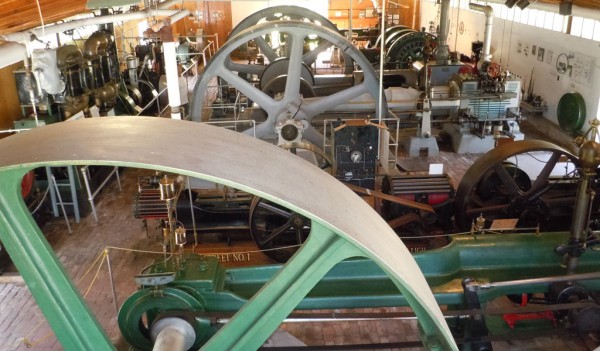When it comes to space heating, TRIAD boasts of its excellent line of boilers with various practical applications with proven performance advantages.
TRIAD Hot-Water Space-Heating Boilers provide a rugged solution for a various range of hydronic-heating applications. Similar to all TRIAD boilers, these are ready-to-install packaged systems featuring a perfectly-matched powerful, efficient burner/boiler combination. All appurtenant hot-water boiler controls and secondary plumbing are installed and pre-wired, with the vessels clearly passing through a 32-inch doorway for immediate start-up.
These excellent space-heating boilers are highly recommended for use in schools & universities, healthcare facilities, office buildings, historic landmark buildings, residential space-heating and industrial space-heating requirements. Redundant modular boilers are very important for healthcare facilities and the Small Footprint unit is the perfect solution for universities and other campus heating requirements in many assorted building applications.
TRIAD boilers are also perfect for decentralizing a large central-heating plant. Simple off-the-shelf controls allow facility managers to quickly and easily conduct vital maintenance operations and also quickly source out parts when required.
Versatility and Other Advantages
For industrial operations, TRIAD’s uniquely-designed, sturdy boilers can provide heat to a small area of a large facility without installing a line from the central heating-plant. Various applications for these boilers include plating-processes, drying-ovens, food-processing, quenching-operations and wash-down stations.
TRIAD also provides burners that can fire gas, oil, propane, or dual fuel. Gas trains can be stage-fired via several options: on/off, low/high/off, low/high/low or modulating. The sizes vary from 300 MBH up to 2000 MBH. And the best thing is that even the largest boiler fits through a 34-inch doorway.
Since these are modular boilers, as many of these boilers can be linked together to create a highly-efficient system that can deliver millions of BTU’s on the coldest winter days or just the minimum of BTU’s on a mild spring day.
These hot-water boilers can be operated by TRIAD’s modular control panel (or another manufacturer’s panel) that automatically fires additional boilers based on heat load, to create a very efficient space heating system for residential, commercial and industrial needs.
For inquiries about TRIAD Boilers, contact us at:
1099 Atlantic Drive, Unit 2
West Chicago, IL 60185
Phone: (888) 526-5245
Fax: (630) 562-2800
Corliss Steam Engine Boiler Group Gear Rooms The New England Wireless and Steam Museum
The George H. Corliss engine is out of the image at the bottom. From bottom to top the engines are; a William Harris, a pair of Armington-Sims, the Improved Greene, the Heavy-Duty William Harris, an American Ball, and at the top is the Fitchburg. You can see the triple-expansion Herreshoff at the left.
History of the Merriam Steam Building
Steam Engine Manufacturers in Rhode Island
Armington & Sims Engine Company, Eagle St, Providence
Corliss Steam Engine Company, Charles Street Railroad Crossing, Providence
Granger Foundry and Machine Company, Gaspee St., Providence
Herreshoff Manufacturing Company, Bristol
Nichols and Langworthy, Hope Valley (New York Safety Steam Power Company)
Providence Engineering Works, 521 South Main St., Providence (Improved Greene Engine, Rice & Sargent)
Providence Steam Engine Company, 373 to 379 South Main St., Providence
Rice & Sargent Steam Engine Company, Providence
William A. Harris Steam Engine Company, Corner of Park and Promenade St., Providence
People in the Steam Engine Business
Pardon Armington; J. C. Hoadley Company, Armington & Sims
George H. Corliss; Corliss Steam Engine Company
William A. Harris; Corliss Steam Engine Company, William A. Harris Steam Engine Company
Gardiner C. Sims; J. C. Hoadley Company, Armington & Sims, William A. Harris Steam Engine Company
Steam Engine Manufacturers in Massachusetts
B.F. Sturtevant, Hyde Park
Fitchburg Steam Engine Company, Fitchburg
Shipman Engine Company, Boston
Steam Engine Manufacturers in Connecticut
Baxter Steam Engine Company, Colt Arms, Hartford, CT
Corliss Steam Engine Boiler Group Gear Rooms The New England Wireless and Steam Museum
Related Articles:
http://forums.oreilly.com/topic/88627-the-corliss-engine-group/
Harris Corliss Steam Engine Group of Companies: Harris-Corliss Steam Engine
Harris Corliss Steam Engine Group of Companies: Harris-Corliss Steam Engine
1895
example of a late 19th-century Corliss-type steam engine
This 350-horsepower Corliss type steam engine is an example of a typical late nineteenth century steam engine. The essential feature of Corliss type engines is the valves that admit steam to and exhaust it from the cylinder. The Corliss valve gear made the engine extremely efficient in steam consumption and was the most efficient system for controlling low to medium speed engines.
This particular engine operated for more than eighty years, having been retired not by age but over concern for stack emissions by the U.S. Environmental Protection Agency. The engine was built by the William A. Harris steam engine company of Providence, Rhode Island (at one time the world center for steam engine manufacturing), and was first used at Atlanta's Cotton States and International Exposition of 1895, Piedmont Park, Atlanta.
The engine was delivered on May 16, 1898, to the Exposition Cotton Mills in Atlanta and was sold to Randall Brothers between 1898 and 1910 for use in their woodworking plant. In service more than seventy five years, it was used to drive an electric generator and power machinery through overhead line shafting. The steam boilers were capable of burning wood, coal, or gas until converted to fuel oil in the 1970s. Designated by the Atlanta Section.
Comments from Visitors/Members:
The steam engine was retired in 1977 due to environmental concerns regarding the boiler smokestacks. The boilers were converted from wood chips to oil, which proved too expensive and unreliably supplied. In 1977 the plant switched to grid-supplied electricity.
The steam engine remains in its original location in the plant and is available to the public. The boilers occasionally are fired up for demonstration to show the operation of a classic Corliss engine.
Harris Corliss Steam Engine Group of Companies

